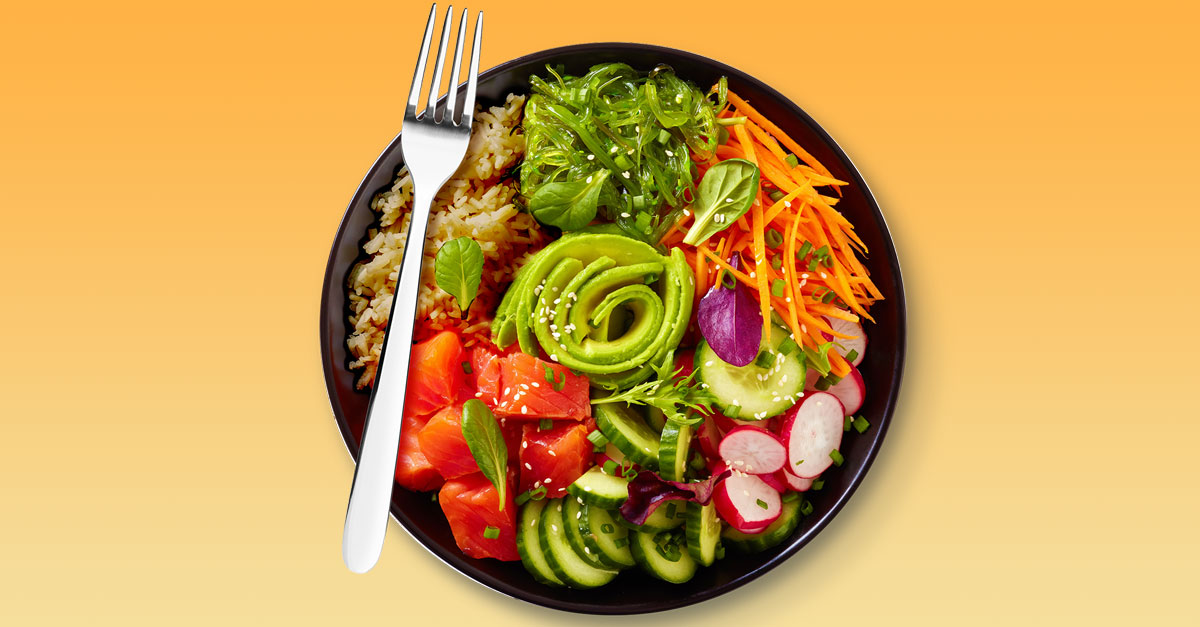“Poke Bowl” mania is everywhere—on social media…in your local grocery store…and even at a nearby poke bar. So what are these one-dish wonders? In case you’re not quite sure, poke (pronounced “POH-kay”) is the ubiquitous rice bowl filled with super-fresh raw fish and other vibrantly colored toppings. It’s not too late to learn how to make your own poke bowl creations…
A Customized One-Dish Meal
Poke is a traditional Hawaiian dish that dates back centuries. Today’s poke bowl is a delicate dish of fresh, diced raw fish (often marinated) and served cold over rice. The rice and fish are seasoned and topped with vegetables and sauces packed with savory umami (the so-called “fifth” taste—after sweet, salty, sour and bitter—that imparts a meaty-type richness).
All ingredients are sliced and diced into bite-size portions. The beauty of a poke bowl is that it is an easily customizable dish, so you can change up the ingredients to your liking. Think of it as the next generation of fast-food sushi, where you can have a complete, nutritious meal ready to eat in minutes, no rolling required. And even if you’re a vegetarian, you can create your own fish-free poke bowl.
Make Your Own Healthy Poke Bowl
At the most basic level, a poke bowl is made up of…
• The base. This is typically white rice. To make it healthier, choose brown rice, quinoa, farro or fresh dark leafy greens instead. Arugula is especially healthful, as it is a cancer-fighting cruciferous vegetable.
• The protein. Cubed, sushi-grade raw salmon or ahi tuna (yellowfin tuna) is the standard protein. However, if you’re worried about eating ahi tuna due to overfishing and/or its high mercury level, choose the salmon sashimi instead. If you don’t like raw fish, then cook it to your liking. It will take only a few minutes. Note: Be sure that you do not marinate the fish in soy sauce or you’ll add too much sodium. Remember, you can always opt for some other lean protein, such as hamachi (Japanese amberjack or yellowtail fish)…cooked shrimp, chicken, crab or octopus…scrambled egg…or tofu (as a vegetarian option).
• The veggies. Healthy choices include cubed avocado, seaweed, shaved radish, shredded carrots, shredded Napa cabbage, cubed cucumber and edamame.
• Seasonings. Instead of high-sodium soy sauce, try a plain (but flavorful) rice vinegar, which has no sodium and is low calorie, with sesame oil. For spice, try sliced jalapeños, sriracha sauce (which contains capsaicin, a chili pepper derivative good for metabolism) or wasabi. A sprinkle or two of Eden Shake Furikake Sesame and Sea Vegetable Seasoning (a Japanese seasoning mixture of sesame seeds, chopped seaweed and salt—one tablespoon has 150 mg of sodium) is another healthy option.
• The toppings. Cubed mango, sliced pears, scallions, pickled ginger and onions, chopped nuts and sesame seeds are nutrition-packed options for toppings. To keep it healthy, stay away from the fried stuff (such as onions or wonton strips)!


